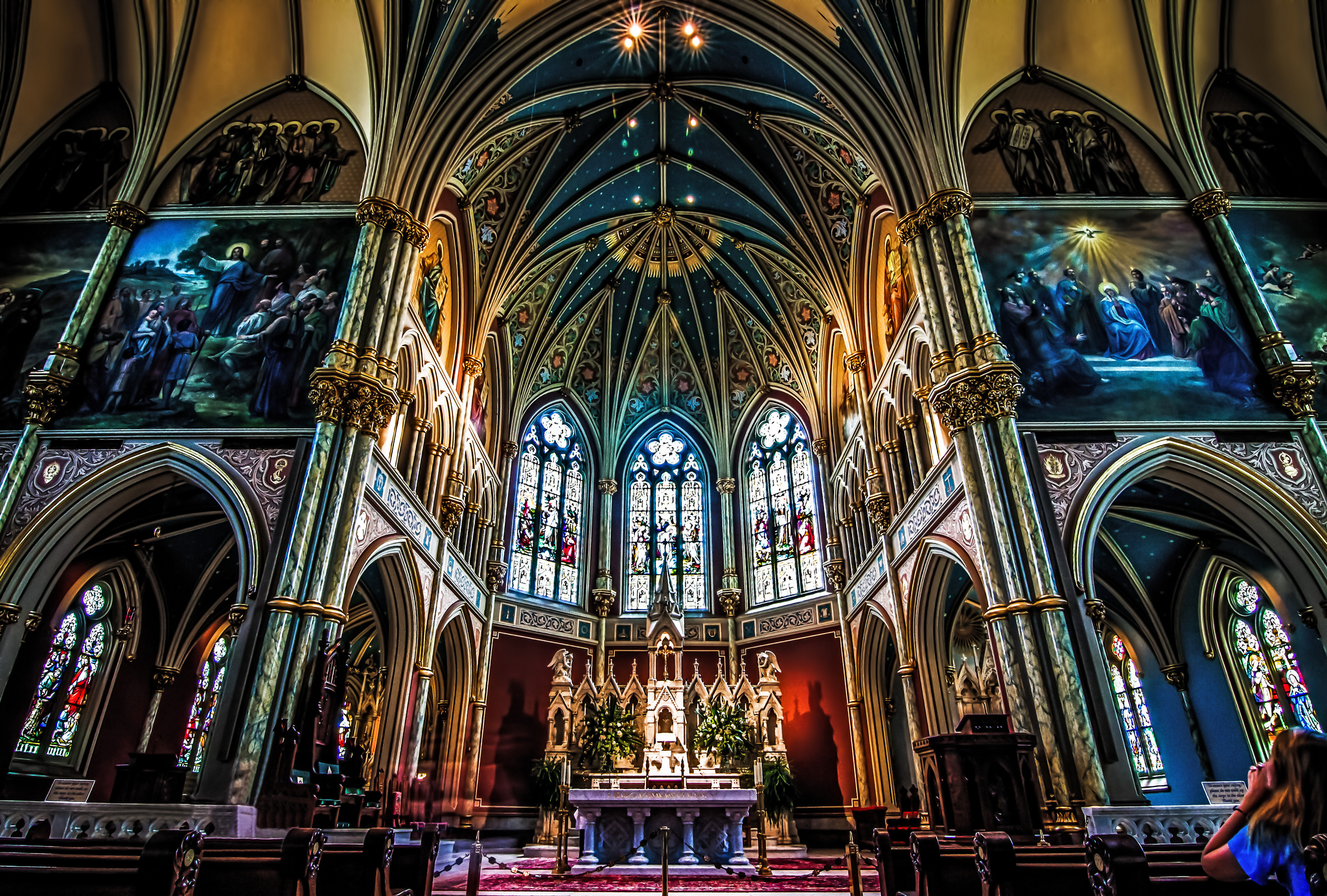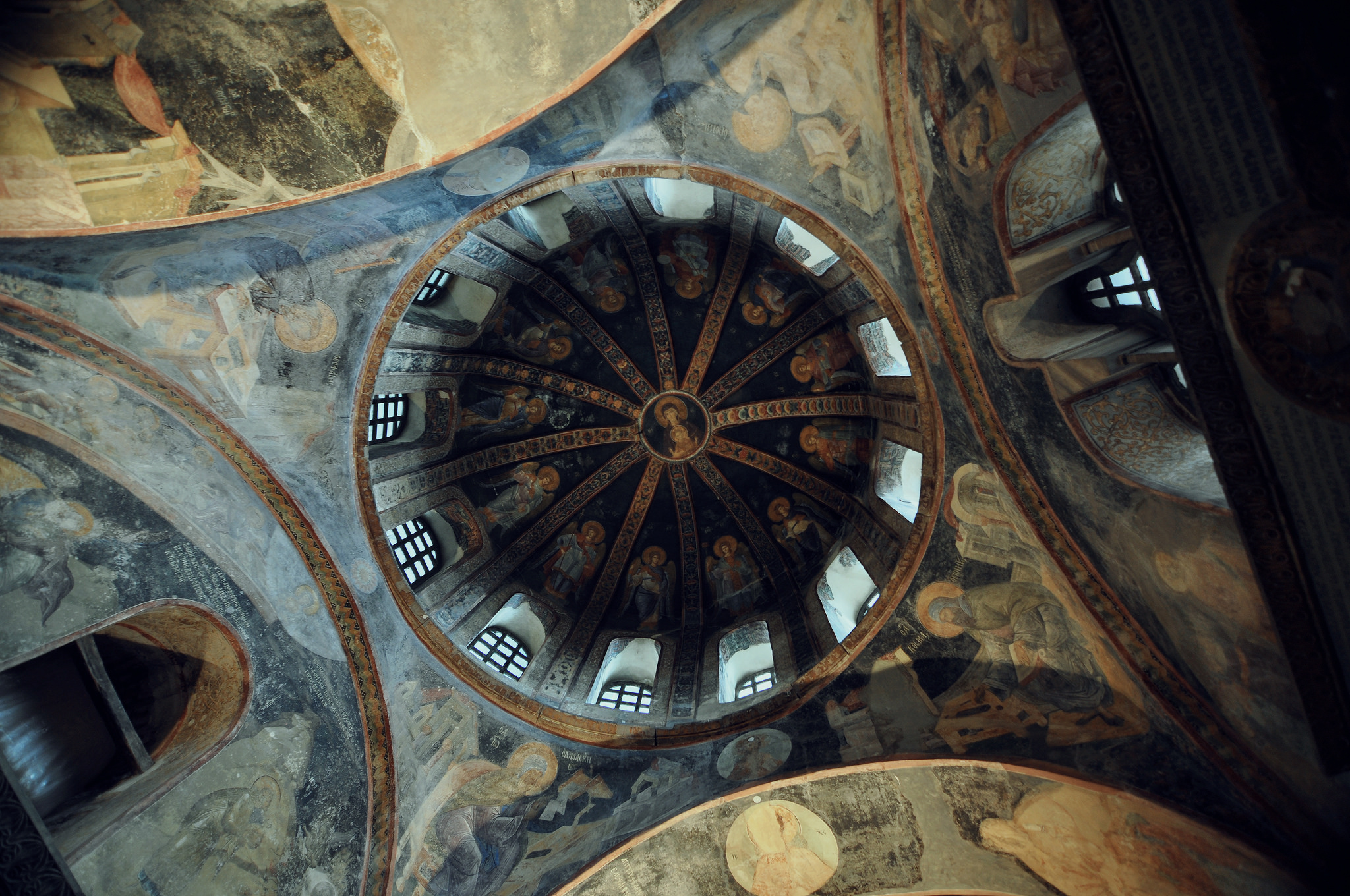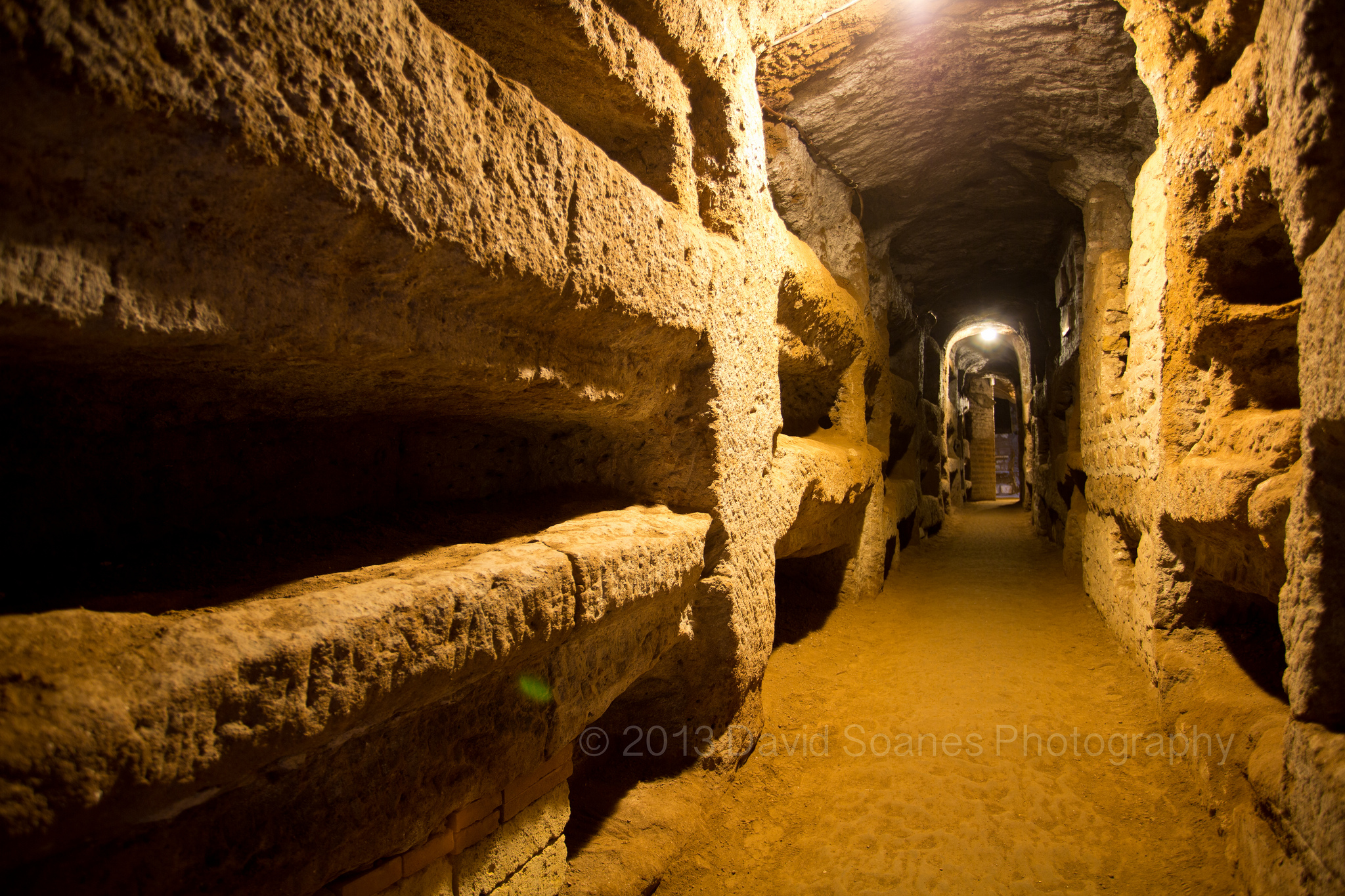+St. Boniface+
By the time Jesus’ Public Life began, ancient Rome had achieved an uneasy truce with the Jews, more out of necessity than concession. The Assassins, a faction of the Jewish sect known as the Zealots or Sicarii, were particularly dedicated to wreaking havoc. Many believe they were Pharisee extremists, identified by some historians as the secret avenging arm of the Essenes, determined to force political change. It is more likely, however, that the Essenic sect was put to service by faithless Pharisees to redirect the people into rabbinic, man-centered channels. The Jewish religion had become a caricature of its former self. Shot through with priestly graft and the political intrigues of the Saduccees; weakened by the various Pharisee sects determined to use them as a political vehicle and seedbed for their own hybrid Gnosis, the Chosen People were at cross-purposes with one another. Having lost much of their ancient sense of mission, they were merely ripe fruit waiting to fall. In short, their factionalization, fragmentation and doctrinal deviations were not unlike the Church’s situation today. Ruled from afar by a quasi-democratic authority already experiencing the first symptoms of sociological decline, even political conditions then were not unlike our own.
In 68 A.D., the Jewish Zealots, ever the political adversaries of Rome, turned the Temple into a fortress, engaging the Roman armies and generally creating havoc. Chaos ensued for the next two years. The Temple was stormed and set afire by Caesar’s armies and destroyed in 70 A.D. as foretold by Christ in Matt. 24:2. Following its destruction, the factionalized Pharisee-led Jews were hard-pressed to present a united front. Decimated by conversions to Christianity and Roman persecution, they sank into the shadows for a time, fed only by their antagonism to Christianity, there to reorganize. Turning inward on themselves, they held fiercely to what was left of their religious teachings and traditions, concentrating on community and family life. As was also the custom among early Christians, the Jews held religious services in their homes. Some Jewish sages tarried with the Mandean, Essene, Ebionite, Docetic and Gnostic sects, imbuing these heresies with Jewish, latter-days teachings on the end of the world and the coming of a second (warrior) Messiah-King. Also attenuated, it seems was Christian doctrine concerning the Trinity. Before the birth of Christ, the Jews had conceived a rudimentary idea of the Trinity already, as their ancient manuscripts reveal. Because they vehemently denied that Christ was the true Messiah, they could scarcely accept Him as part of their pre-conceived Trinity. Systematically, Pharisee scholars began to reconstruct this teaching, drawing heavily from the most ancient of their oral traditions and pagan myths theorizing how the Godhead manifested itself. These sources were summarized in the pagan (falsified) version of the Kabbala, a detestable book that was nothing less than the history and practice of Baal worship.
The sun gods occupied a place of honor in the ceremonies of the Egyptian mystery religions that fueled Gnosticism because the sun’s warmth and light was so necessary to crop growth. The feverish multiplication of Gnostic sects and Rome’s attempts to gain allegiance by introducing polytheism, (which allowed any and all pagan gods to be worshipped without injuring loyalty to the emperors and Jupiter) all succeeded in synthesizing (combining and intertwining) pagan worship. Osiris, Ammon-Ra, Baal, Dionysius, Jupiter, Mithra — all became connected in some way with fertility rites and crop rituals. They also were carried into and mingled with the cults of Northern Europe. Jupiter or Jove is described in St. Augustine’s “City of God” as “king of all gods and goddesses.” Reverencing the god’s “sacred oak,” a symbol of strength in warfare, was an important part of Jupiter worship. The Greeks worshipped Jupiter Ammon as the ram- headed sun god in Aries, (April). In a Cretan legend, Dionysius or Bacchus, the god of wine, was said to be Jupiter’s son, mutilated by his enemies. In another legend, New Age author Immanuel Velikovsky portrayed the goddess Venus as a separate planet issuing from the “head” of Jupiter, and tied Jupiter to the sun god Horus, Babylonia’s Ishtar and the “owner of all” god Baal, mentioned in previous chapters.
The Romans designated Jupiter god of the wine crop, Frazer said. Jupiter Capitoline was worshiped as the god of thunder, lightning and rain, while Baal is styled as the “storm god.” Thus the Druidic rituals with their sacred oaks, Thor, god of thunder and other similar deities, all emanate from the same source. John B. Noss in “Man’s Religion,” stated that one of the earliest forms of idol worship involved tribute paid by the Canaanites to their Baal farm gods, indicating these gods owned or possessed the soil they planted. Worship of these Baal was carried out on hillocks, high places or in strongholds where fertility symbols were usually deposited. (The kissing of the soil on arrival in a new locale or custom of tossing the soil of newly acquired ground in the air or over one’s shoulder is reminiscent of this pagan belief.) The Catholic Encyclopedia (1911) identified Baal as “genius lord of the elements,” and in Osee 2:6 it is Baal who “gives bread, water, wool, flax and drink.” In his “Idol Worship of the World,” Dobbins identified this god as “Baal of the Covenant.” Josephus Flavius related that the Essenes were known as “Sons of the Covenant,” and also worshipped the sun.
As previously noted, Frank Dobbins, in his “Idol Worship of the World,” writes: “Baal’s temple was a fortress” where the money left him by devotees was kept hidden in order to be worshipped alongside the god, demonstrating that power and money were as closely connected in those days as in our own. (This is reminiscent of the Vatican banking scandals and the rumored wealth of both the Templar and Hospitaller sects, also the Masonic commitment to advance sect members financially through occult contacts in business and finance.) The Israelites worshipped Baal up to the time of Samuel, desisted for a time, then resumed their idolatry, as stated earlier. Elias slew the priests of Baal on Mount Carmel. Today that mighty prophet would find Baal’s priests and devotees more numerous than ever before.
And Baal worship is intricately connected with the coming of Antichrist, also referred to by St. Jerome, St. Bernard Clairvaux, Pope Paul IV and other commentators as the abomination of desolation. Francis Gigot says regarding the abomination, under this heading in the Catholic Encyclopedia: “The most recent interpretation which has been suggested of these Hebrew words is to the following effect: The phrase shíqqûç shômem stands for the original expression bá` ál shámáyîm (Baal of heaven), a title found in Phoenician and Aramaic inscriptions, and the semitic equivalent of the Greek Zeus, Jupiter, but modified in Daniel through Jewish aversion for the name of a Pagan deity. While thus disagreeing as to the precise sense of the Hebrew phrase usually rendered by ‘the abomination of desolation,’ Christian scholars are practically at one with regard to its general meaning. They commonly admit, and indeed rightly, that the Hebrew expression must needs be understood of some idolatrous emblem, the setting up of which would entail the ultimate desolation of the Temple of Jerusalem (I Mach. i, 57; iv, 38). And with this general meaning in view, they proceed to determine the historical event between Our Lord’s prediction and the ruin of the Temple (A. D. 70), which should be regarded as “the abomination of desolation” spoken of in St. Matthew, xxiv, 15, and St. Mark, xiii, 14.” This however, does not address our own times, although it is plain to see that a connection exists.
Paul Winkler, in his “The Thousand-Year Conspiracy” related that the celebration of communal meals replaced human sacrifice as an offering to the gods to obtain good weather and bountiful crops. Frazer’s description of the green-faced Osiris, crowned with laurels, brings to mind the Jolly Green Giant of TV and grocery-shelf fame. A television movie, “Children of the Corn,” portrayed the revived custom of sacrificing human victims to the corn god. Winkler explained that the wheat or corn and wine in the communal meal replaced the flesh and blood in these sacrifices. Patai ranked Moloch as synonymous with Baal and Holy Scripture tells us it was to the god Moloch that the pagans sacrificed their children. Winkler reported that this worship of agriculture carried with it it’s own moral system, based on a code of peaceful co-existence as opposed to the divide and conquer mentality. From this “share the earth’s goods” philosophy, which Winkler referred to as “ground life” came the primitive idea of communism, passed down through the Egyptian mystery cults to the Pythagoreans, then to Plato and his students, who carried it, in turn, into Essenism.
In his “Tracing Our Ancestors,” a work said to be favored by one-time Pilgrim Society propagandist William Allen White, Frederic Haberman stated that the planting, sowing, reaping and preserving cycle of agriculture applied also to the regenerative cycle of man. Proof of this is easily found in Masonic ritual and manuals. It is applied not only to the children man creates, but also to his handiwork and thought processes. The Catholic Encyclopedia attributed this to the identification of Baal as the “male fertility principle.” That secular humanism was involved in this worship is verified by the Encyclopedia author, who wrote that pagan homage to Baal could be given by devotees kissing their own hands. This practice could have reference to the signing of Antichrist’s servants on their hands or foreheads, and “foreheads” could indicate the practice of Masonic baptism described by Madison Peters in his “The Masons as Makers of America.” It also could apply to Novus Ordo baptism.
To ensure the adequate sustenance of man needed to guarantee his fertility and productivity, this communal meal celebrating crop worship became “a literal enactment of the cycle of the passion of the solar deity,” Haberman wrote. It also is repeated in Rosicrucian rituals of initiation. This in gross imitation and direct opposition to the Church’s own liturgical cycle. What is offered for consecration in the NO, then, is not validly consecrated and can become an offering to the sun god. When the Novus Ordo liturgy was established on Holy Thursday, 1969, Montini, so appreciative of man’s vast “creative” abilities left the bulk of this bastard liturgy open to interpretation, substitutions, adaptation and combinations according to the desires of the people and the celebrant. Only the new offertory was fixed in stone in this ghastly service so devoid of any reference to the renewal of Christ’s Sacrifice on Calvary. This service was diametrically opposed — reversed, in Satanic fashion — as compared to the Tridentine Mass, where every word, every motion was prescribed by Tradition.
Lest some spurn the identification of Novus Ordo rites with Baal worship, the following account taken from Tito Casini’s The Last Mass of Paul VI might be of interest. According to reports published by a Catholic news service in Belgium in 1970, a theological congress was held that year in the Belgian capital to reformulate the Creed. The congress was attended primarily by youths and the designated church was “transformed for the occasion into a hippie temple,” according to the news service. The attending youths indulged in suggestive dancing, smoking, drinking and so forth, which puts one in mind of Rev. Haydock’s commentary on the Douay-Rheims passage describing the contest between the prophet Elias and the priests of Baal, (3 Kings Ch. 18:26). Haydock noted: “The prophets of Baal acted in a foolish manner…The pagans were accustomed to dance around their altars.” Casini then described what would seem to any true Catholic to be a horrifying outrage to God. At the heighth of the event, “from behind the altar there rose up an enormous phallus in transparent plastic.” Casini comments that although one Church prelate actually protested this monstrosity, no interdict of the church or excommunications were forthcoming.
This perfidious liturgy capable of the very abuses observed above is nothing more, nothing less than the institution of a new “sacrifice” honoring a false god, in actuality a demon; a sacrifice observed on an altar set in front of the main altar once reserved exclusively to consecrate the Body and Blood of Christ. While the entire Novus Ordo liturgy can be termed only as abominable, ironically it is the new offertory that reveals the true orientation of this service. As one Catholic author has noted, Adam and Eve were the first humans to participate in the consumption of forbidden fruits while yet in the Garden. Their son Cain offered second-hand “fruits of the earth,” and slew his brother Abel for offering a pure sacrifice pleasing to God, the only acceptable sacrifice capable of satisfying for the sins of men. Cain’s defective offering, today, is the only offering made in Novus Ordo “masses.” This offertory was foretold by Moses in Deut. 31:29-30, where the prophet proclaims: “For I know that after my death you shall do wickedly and will quickly turn aside from the way that I have commanded you: and evils shall come upon you in the latter times, when you shall do evil in the sight of the Lord, to provoke Him by the work of your hands.”
It is no surprise, then, that this offertory never varied. Out of all the other variables, from service to service, it is worded as it is in the Novus Ordo Missae: “Blessed are you, Lord God of the Universe, because from your bounty we have bread, which we offer you, fruit of the earth, the work of human hands. It will become for us the bread of life.” This same formula is repeated for the wine: “By the mystery of this water and wine may we come to share in the divinity of Christ, who humbled himself to share in our humanity. Blessed are you, Lord God of all creation. Through your goodness we have this wine to offer, fruit of the vine and work of human hands. It will become our spiritual drink.” This “God of the Universe,” according to the 18th dogma of the Kabbala, is the Devil! While this phrase could conceivably suggest a Catholic interpretation, the very fact that it is capable of being interpreted in this other manner renders it not only ambiguous (DZ 1177) but also highly suspect. Interesting that the offering of the wine mentions man’s divinity, especially since one of the symbols used by one Masonic sect is the grapevine. If the Body and Blood of Christ is not worshipped on Novus Ordo altars, something or someone must take His place.
Montini first introduced his cult’s sacrificial parody in the very month the pagan god Jupiter is worshipped as Jupiter Ammon, sun god — in April, when the sun is in Aries. Thus does the mighty sun god offer his son Dionysius, crop god, to mortals to immolate once again. His pandering to the U.N. self-appointed “guardians of peace” worldwide smacks of Priory (Masonic) lingo and peaceful coexistence, a precept he preached almost exclusively during his 1965 speech to the U.N. “Whoever loves peace loves mankind, without distinction of race or of color. You must serve the cause of peace.” It was this speech and other comments from Montini that inspired the peace-not-war protests, and contributed to the popularity of the upside-down crosses worn by the peaceniks. The symbolism behind this generational talisman will not escape those who remember the nature of St. Peter’s martyrdom. Whether conscious of the fact or not, those wearing this symbol were proclaiming the downfall of the papacy – indirectly supporting Masonry — while endorsing the moral and spiritual decline that accompanied it. Since Montini could not possibly claim to promote the moral system taught by Christ’s Church, another system was necessary to inculcate amorality.
In direct contradiction to Leo XIII’s encyclical Rerum Novarum, Montini gave his blessing to this “ground life.” Pope Leo had written: “God has granted the earth to mankind in general…the limits of private possession have been left to be fixed by man’s own industry and the laws of individual peoples…The main tenet of socialism, the community of goods, must be utterly rejected…Our first and most fundamental principle must be that of the inviolability of private property.” Montini heretically asserted, in accord with his true (Communist/socialist) beliefs, “God has destined the earth and all it contains for the use of all men and all peoples, so that the goods of creation must flow in just proportion into the hands of everybody, according to the rule of justice. All rights of whatever kind, including those of private property and of free trade, must be subordinated to it,” (Popularum Progresso). If it sounds like what’s being promoted today, the source is the same.
Those who believe in the True Presence and consider themselves Catholics are thus cruelly tricked into worshipping the very idol of Jupiter under the guise of bread, as well as the present Jupiter now ruling Rome, (whose name is included in the “canon” of the Novus Ordo liturgy). It is the same idol Antiochus set up in the Temple, the abomination of desolation, and those who claim this does not fulfill Scriptural prophecy will not see. If those who read could only understand, the plain words of the Novus Ordo offertory would be seen for what they really are: Satanic ritual. For as St. Paul teaches, all the gods of the pagans are demons. “But the things which the heathens sacrifice, they sacrifice to devils, and not to God. And I would not that you should be made partakers with devils” (I Cor. 10: 20). Having worshipped at the Devil’s altar for decades, is it any wonder Satan is openly reigning today?





